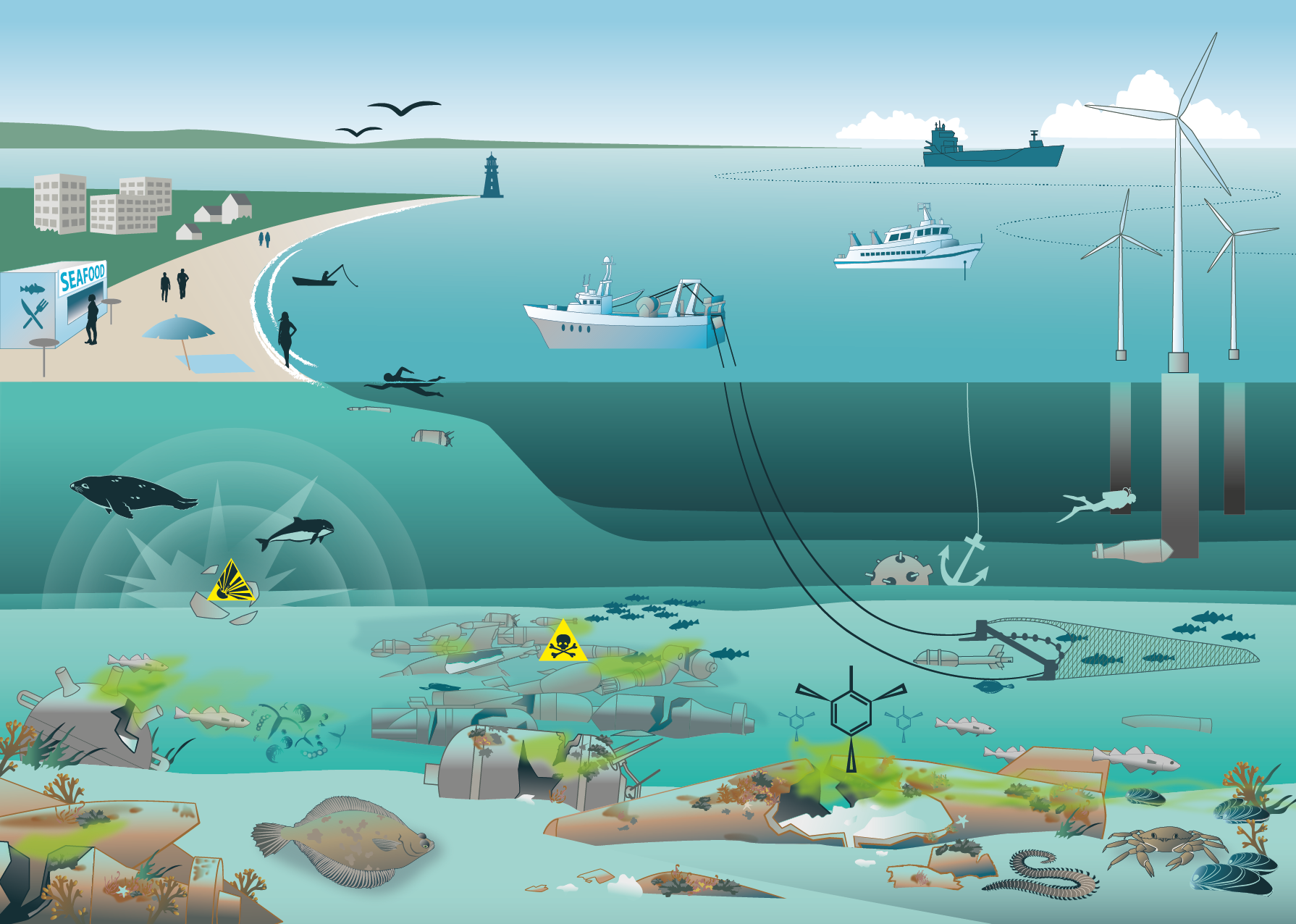After the CONMAR project is finalized, the consoritum will be able to advise on how to manage each of the munition contaminated areas in the German Baltic Sea. This advice will rest on the many project outcomes that are generated in the different work packages. These outcomes will be combined to support the management process.
Graphic: Thiele Illustration
For this purpose, the consortium will fulfil the following objectives:
- Engage stakeholders from government, politics , NGOs, commercial sector, scientists and the public in an open discussion about the problems challenges and solutions of the marine munition issue
- Develop a federated data management concept to enab le cooperative and joint analysis of data for subsequent discussions, assessments and decision making processes
- Establish the Marine Munition Data Compilation Germany | M2DC-GER
- Perform field measurements in selected munition dump areas in the North and Baltic Sea to establish the amount and type of munition present and the distribution of dissolved/particulate explosive compounds in the water column, sediment and pore waters
- Develop understanding of corrosion, dissolution and distribution processes of m unition objects, chunks of explosives and dissolved contaminants
- Improve parametrization of contaminant release to better quantify the source strength of munition induced contamination through in lab and field experiments/measurements
- Establish to which ex ten t munition dump grounds are area s of high biodiversity by using ecological studies linked to habitat mapping exercises
- Undertake screening in the field of various faunal groups for MC uptake, and establish the range of MC concentrations within these groups and their tissues and evaluate negative effects e.g. on reproduction
- Understanding the biological effects of MCs on exposed organisms and their different sensitivity towards MCs
- Establish EC50 and LC50 levels for different faunal groups in lab experiments
- Establish understanding of transfer of MCs across different trophic levels
- Establish biomarkers as ‘early warning’ parameter of stress caused by toxic MCs
- Further develop the GETM oceanographic model to become a prognostic tool for MC distribution an d source term extrapolation; use GETM to predict future MC spreading during climate change
- Establish toxicological risks through a scientifically sound environmental, ecological and human risk assessment based on project results
- Ensure reproducibility and comparability of analytical methods between laboratories and in varying matrices/sample origins
- Present a priority list of dump sites and respective ecological and economically valuable remediation strategies
- Engage in discussions to continue marine munition related studies
